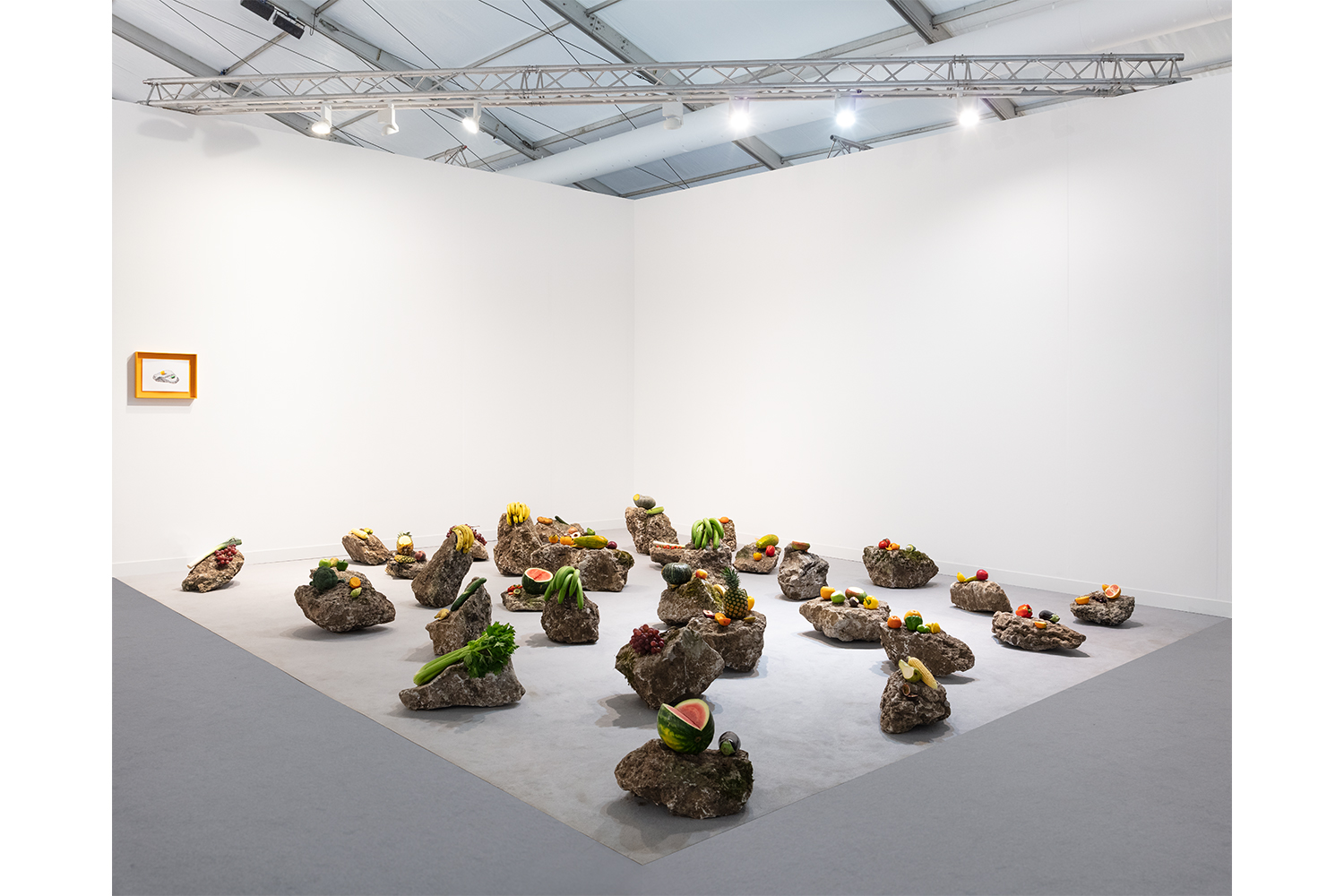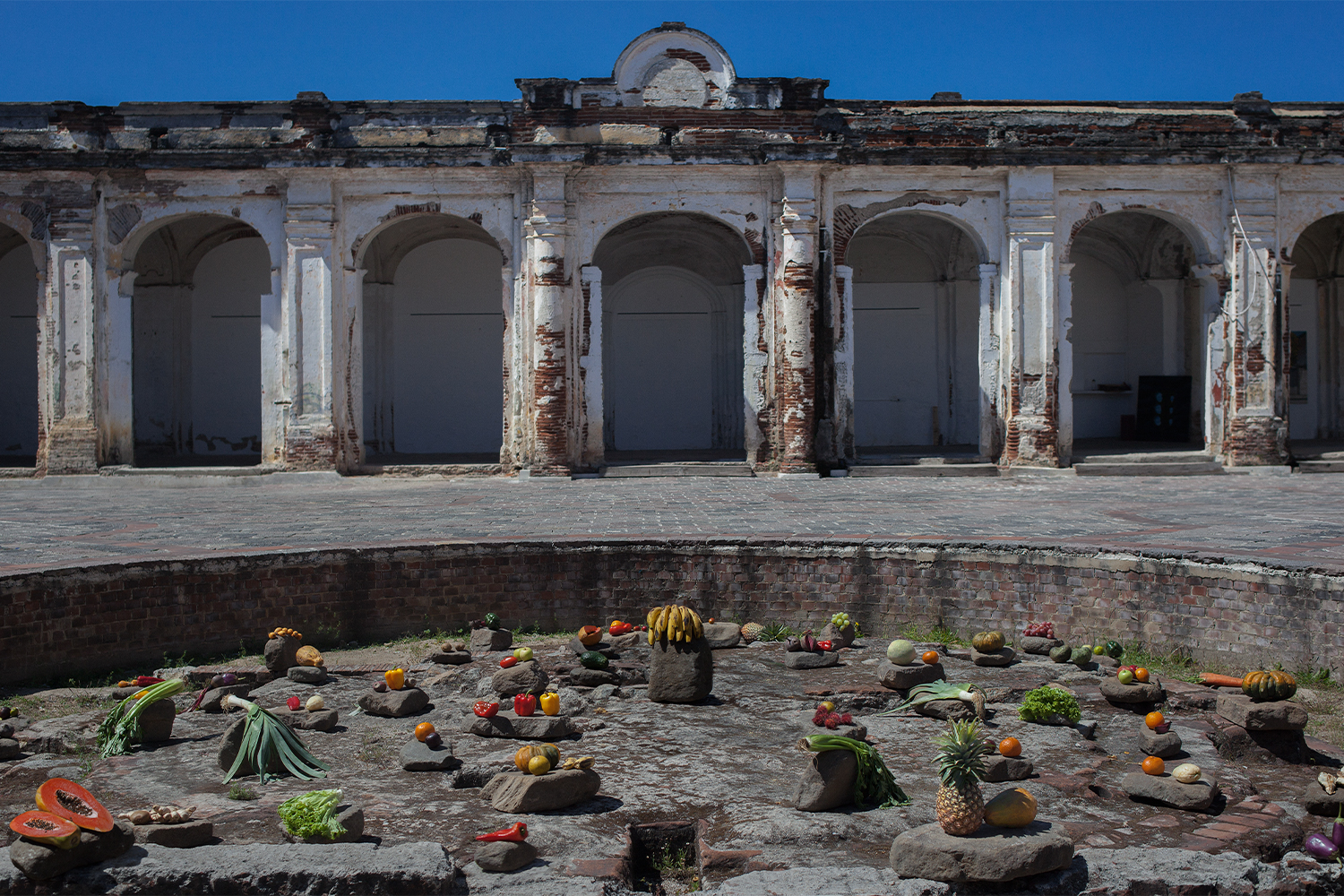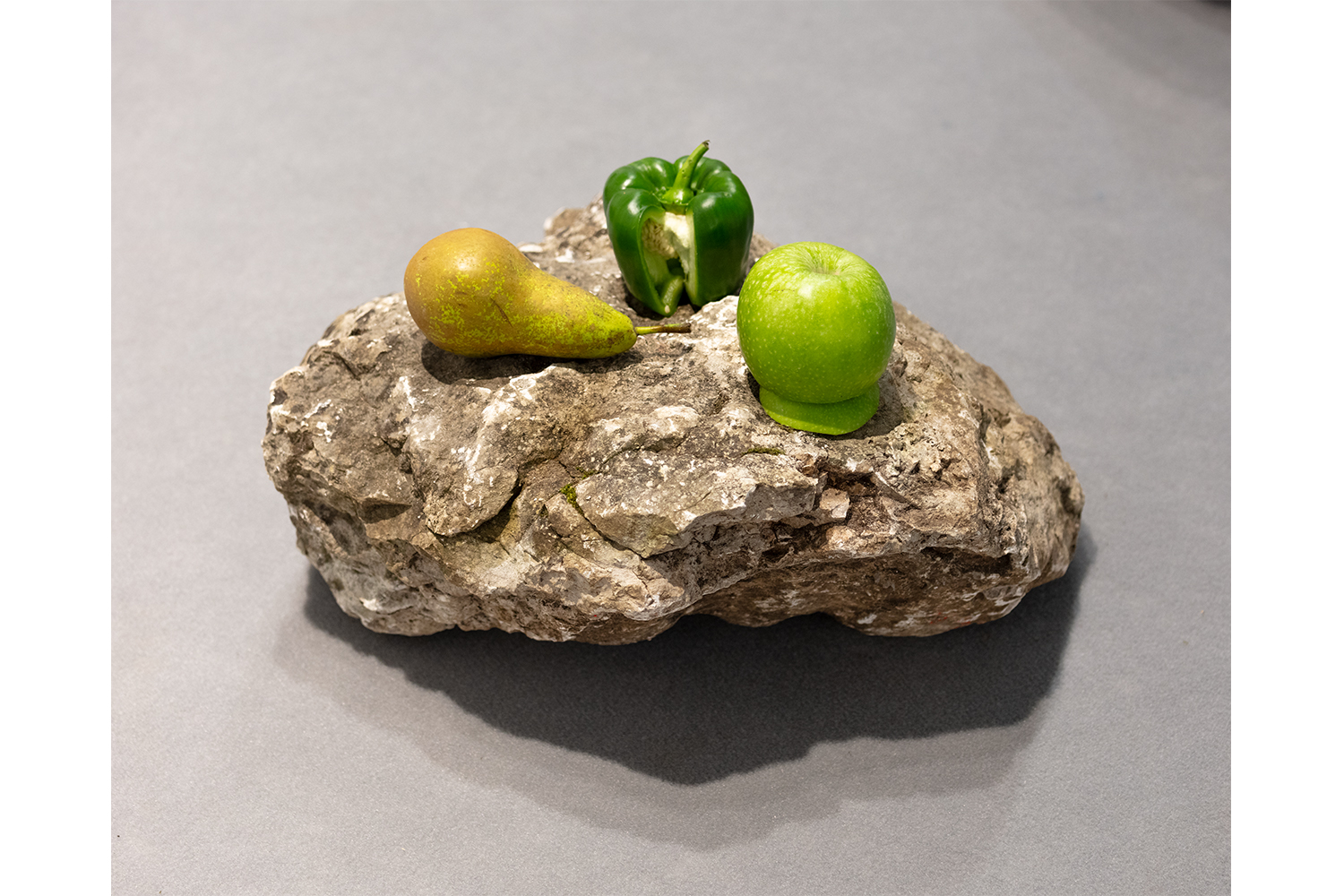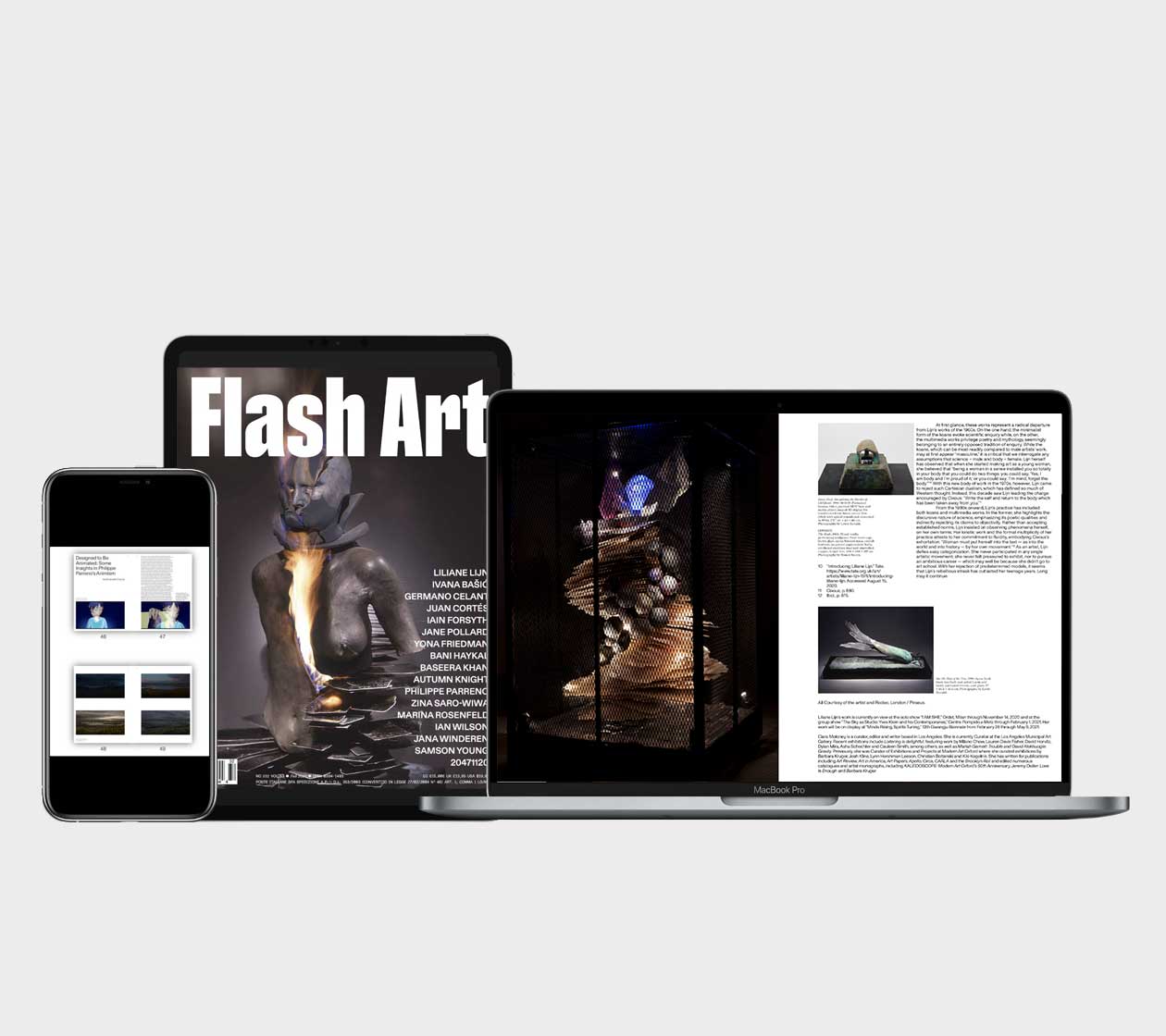A monthly review of global art news from an admittedly fallible viewpoint.

“We are the custodians, not the owners,” Tate curator Catherine Wood said in The Art Newspaper, speaking about the gallery’s recent acquisition of a work by Edgar Calel, shown by Proyectos Ultravioleta at this year’s Frieze London art fair. Stefan Benchoam, co-founder and director of Guatemalan gallery Proyectos Ultravioleta, spoke to me about custodianship, Mayan cosmovision, and the radical potential of non-Western modes of collecting and caring for art.
Edgar Calel’s work (b. Guatemala) explores Mayan Kaqchikel spirituality, cosmology, and community, and the enduring racism, social exclusion, and culture erasure that Guatemala’s Indigenous continue to fight. Over the course of the country’s history, Mayans have faced Spanish invasion, forced land dispossession, and “ladinization” (the so-called “civilizing” of Indigenous people), and yet they have still maintained a culture of resistance that is embodied in Edgar Calel’s practice.
The work from Frieze is titled Ru k’ ox k’ob’el jun ojer etemab’el (The Echo of an Ancient Form of Knowledge). Stones become sacred sites of ritual, and the fruit and vegetables on the top, offerings to the land and ancestors. Calel wrote an accompanying dedication: “We are grateful for being able to walk together with them, and for being able to walk together with them, and for the weight of our body on the hills and valleys.”
Standing in for the artist, who was unable to make the journey from Guatemala to London because of COVID travel restrictions, on Tuesday, before Frieze opened, Ulrik López performed a private ritual. Currently resident at Delfina Foundation, the Mexican-Puerto Rican artist burnt copal incense, soaked the stones in alcohol, arranged chopped fruit and vegetables on top, and gave thanks to the abuelos (ancestors).
Food is central to debates around cultural appropriation. As bell hooks writes in the essay “Eating the Other,” the commodification of Otherness is an assertion of white supremacy that turns the complexities and particularities of race and culture into a “spice” to be consumed, to “liven up the dull dish that is mainstream white culture.” Organic and impermanent, incomplete until ritualized, it transcends the stars; non-sensible to viewers who cannot look beyond their eyes, Edgar Calel’s work refuses to be swallowed up by consumer culture, resists capitalist commodification and Western museums’ colonial drive to possess and hold.

Henry Broome: Under different titles, the work has been installed at Santo Domingo Convent in Antigua Guatemala, Guatemala, and the Serrinha do Alambari nature reserve in the state of Rio de Janeiro, Brazil. The sites provide links to Mayan ancestral claims to land and the history of colonialism and ongoing racial oppression in Guatemala. How does the artist’s work resist and possibly remain incomplete in the often sterilized, hyper-commodified environments of art fairs and white cube galleries, the dominant forms of exhibition space in Western art?
Stefan Benchoam: Numerous versions of this work exist to date. Each version is a new work, which is why each one bears a different title. Each has different characteristics: the type of produce, the ways the rocks occupy the space, the ritual performed, and through it, the energies gathered are different each time. The first version was an untitled happening, which was made in collaboration with Mexican-American artist and filmmaker Rosario Sotelo and took place in Calel’s old studio in his hometown of Comalapa. Various neighbors and spiritual guides attended, many bringing fruits and vegetables as offerings for the ceremony, which transformed the rocks into a sacred site to thank those that came before.
A second version was shown in 2014, titled Abuelos (although the most literal translation of the word is “grandparents,” it is frequently used to refer to ancestors in Mayan cosmology). The work was another collaboration with Sotelo, which included an 8mm film documenting a small and controlled fire, part of an intimate candle ceremony at Iximché, one of the most sacred Mayan sites in Guatemala. Abuelos was presented at the 19 Bienal de Arte Paiz, the first time it was shown in a proper Art context (with a capital “A”). The Bienal was co-curated by Cecilia Fajardo Hill and Pablo José Ramírez, and others. Pablo is coincidentally now adjunct curator of First Nations and Indigenous Art at Tate Modern.
Since then, Calel has presented five new versions of the work as sole author. Each version adapts to the context it’s presented in, whether installed at an art fair like Frieze, or embedded within nature or ancestral lands in Brazil, sites that directly confront the colonial impositions that the Mayan people have and continue to face. In a way, the work is complete as soon as it is ritualized, yet it’s also a live entity that is generous and allows for numerous opportunities for learning that are revealed each time, but only if we are willing to listen.
HB: Tate curator Catherine Wood said, “We are the custodians, not the owners.” The gallery has kept the stones from Frieze, if not the fruit, which would otherwise rot in storage. What are the specific contractual differences between ownership and custodianship?
SB: Tate has not acquired indefinite ownership of the work but rather accepts temporary custodianship for thirteen years, through which Calel offers an opportunity to learn from the lessons stored within the work, and the system of knowledge that it holds. After which time, the temporary custodianship can be extended for another thirteen years or sold to a different institution. If no new custodianship is agreed, the work can be disassembled and go back to its rightful owner: nature.
In recognition of the Maya Kaqchikel communities who developed the systems of knowledge embedded within the work, Tate has also agreed to make a financial contribution to a humanitarian cause in Comalapa that will be determined by Calel in the weeks to come.

HB: How might the concept of custodianship and the Mayan cosmology the artist’s work draws on suggest a radical alternative to Western museums’ colonial acquisitiveness?
SB: Custodianship is a practice of care which is rooted in Mayan epistemology and challenges the Western logic of ownership and perpetuity. The work reveals the possibility to consider alternative forms of care that have been practiced by Mayan people for hundreds, if not thousands, of years. For example, for the Cofradías (Mayan religious fraternities), spiritual resources belong to the communities that care for them, and custodianship constantly changes from family to family.
Each period of custodianship with Tate will last thirteen years, a number which corresponds to the thirteen energies possessed by nahuales. (A nahual is an animal form that a person can take. According to the Mayan cosmovision, there are twenty nahuales, depending on which day a person is born.)
The artist has proposed there could be up to seven altars that exist simultaneously, each covering a particular geography: Europe (the one presented at Frieze, now under the custodianship of Tate), North America, South America, the Caribbean, Africa, and Asia, and a final altar that will always remain in Guatemala. The number seven is another important number in the Mayan cosmology, relating to the story of Wuqub Kaqix, which is from the sacred Mayan book of creation Popol Vuh. Wuqub Kaqix (or Seven Macaw) is the deity of the seven stars of the Big Dipper. He thought he possessed the brightest light in the sky, however the sun returns after a long night, offering him, and all of us, a lesson in humility.
As a model of collecting and caring for art, custodianship gives Western museums a radical opportunity to reconsider their curatorial practices. Custodianship offers a way to collect works conceived from completely different epistemologies, without compromising their artistic, conceptual, and spiritual integrity.

